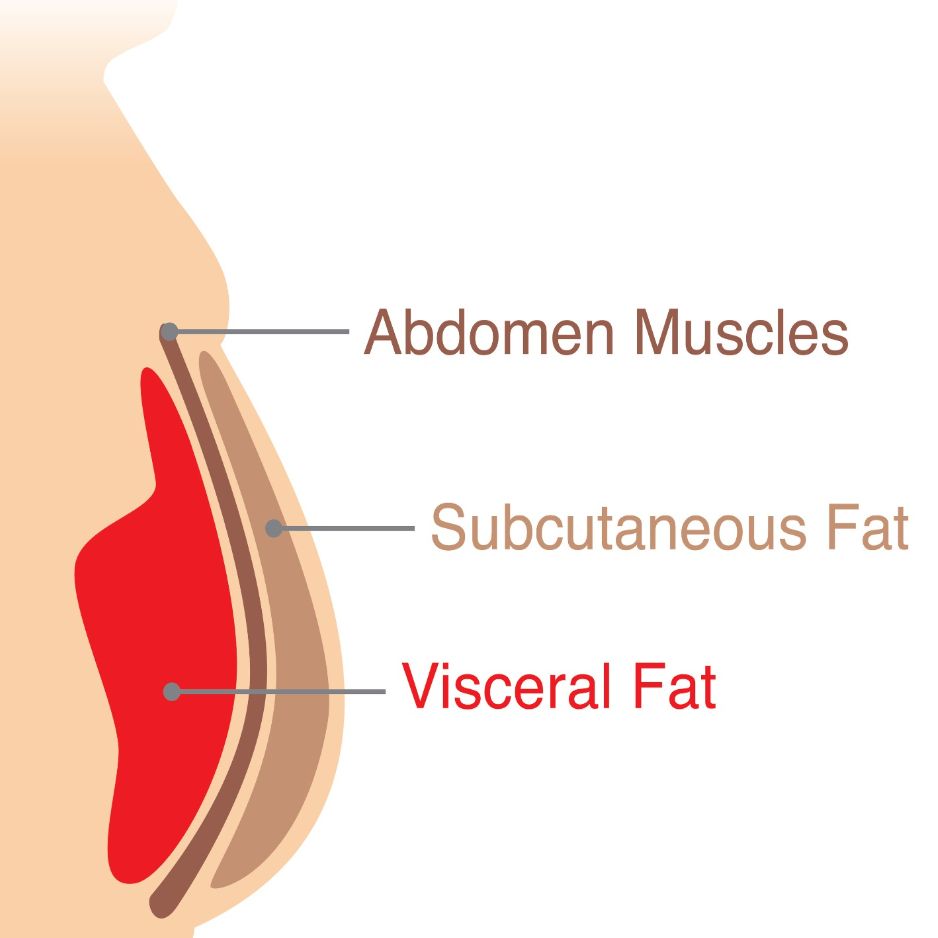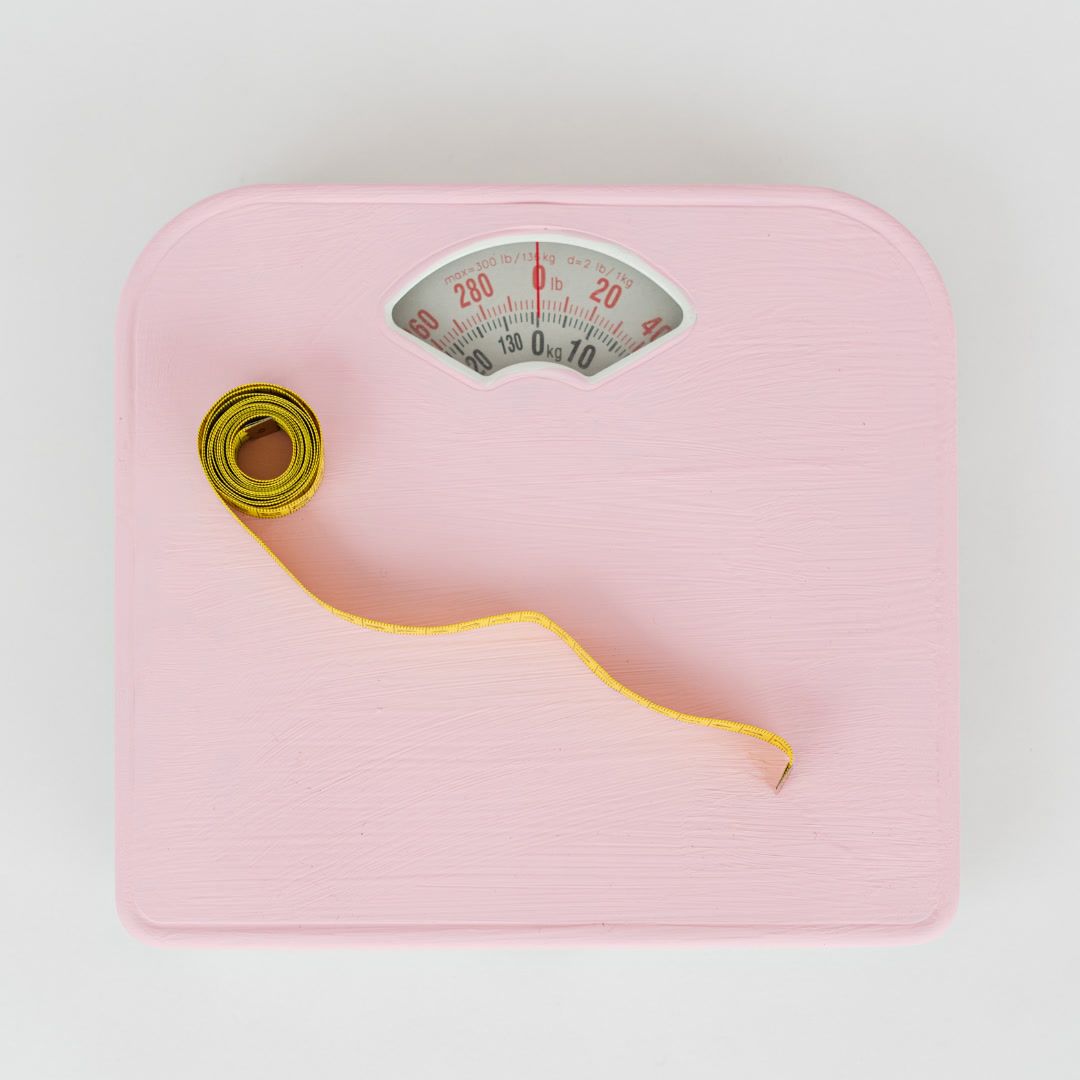Diastasis Recti Exercises: Safe Recovery Guide
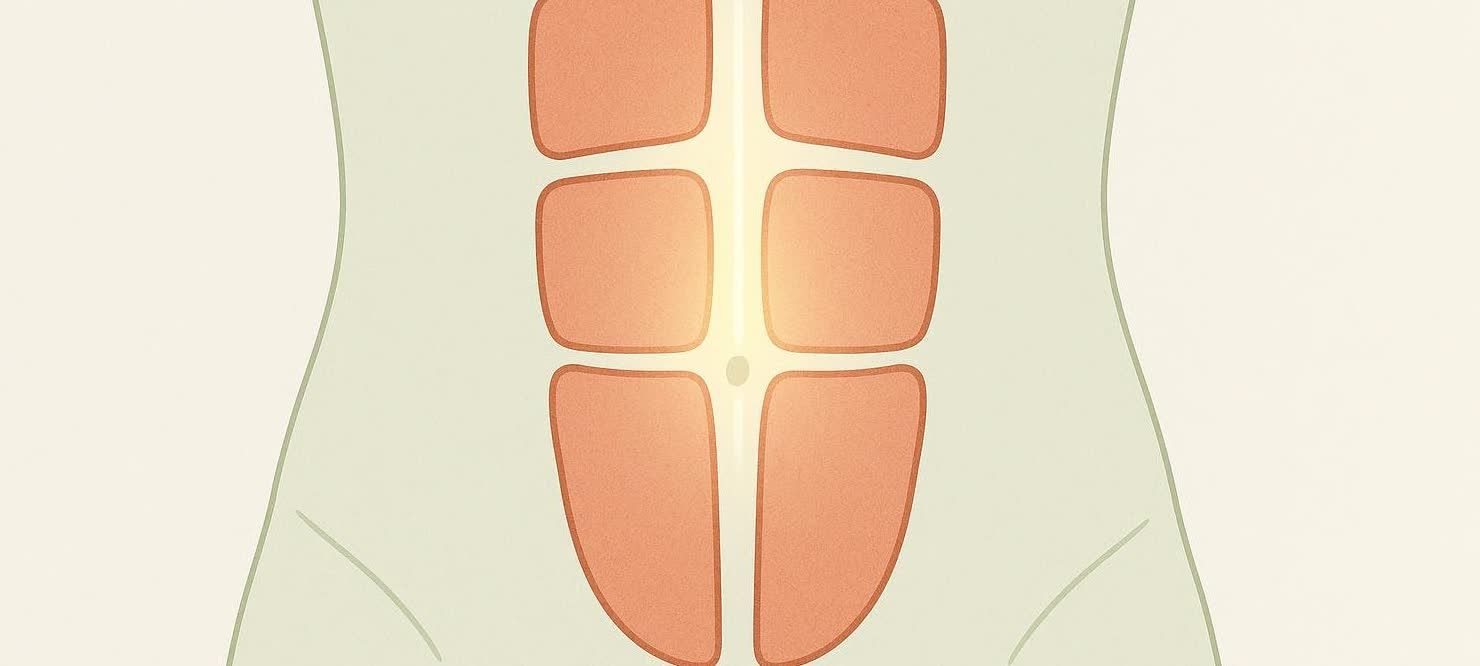
Diastasis Recti Exercises: Safe Recovery Guide
Quick Take: The safest diastasis recti exercises teach you to breathe, brace, and move without letting your abdominal wall dome outward. Start with gentle activations, progress to functional strength, and know when it’s time to call in a pro.
Table of Contents
- What Is Diastasis Recti?
- How to Measure Your Gap
- Movement Rules for Every Stage
- Beginner Diastasis Recti Exercise Circuit
- Intermediate Progressions
- Advanced & Functional Drills
- Common Mistakes & Troubleshooting
- Daily Habits That Speed Healing
- When to Seek Professional Help
- FAQs
What Is Diastasis Recti?
Diastasis recti (DR) is a separation of the left and right sides of your rectus abdominis—aka the “six-pack” muscle—along the linea alba. The condition shows up most often in the late stages of pregnancy and the months that follow, but men can develop it too—usually from rapid weight changes, heavy lifting, or chronic straining (Cleveland Clinic).
Why does it matter? An overstretched linea alba can’t transfer force well. You may notice:
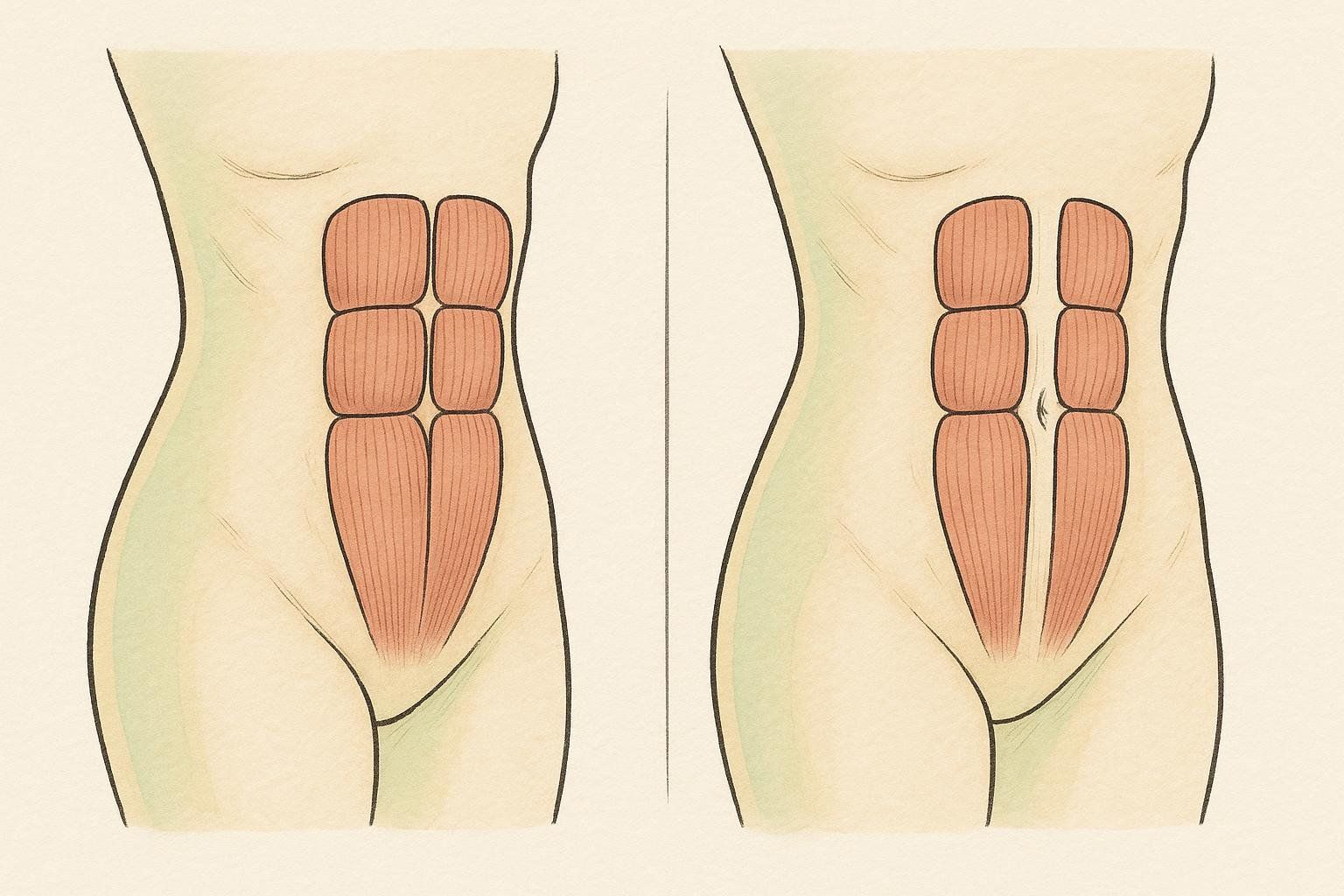
- A visible “pooch,” bulge, or dome down the midline
- Low-back or pelvic pain
- Poor posture and core weakness
Consistent, targeted exercise is your first-line treatment. Surgery is rarely required.
How to Measure Your Gap
- Lie on your back with knees bent, feet flat on the floor.
- Place three fingers horizontally just above your belly button.
- Exhale, lift your head and shoulders slightly, and gently press down.
- Feel for the two firm edges of muscle on either side of the midline—not everyone has a visible six-pack, so focus on sensing where the tissue becomes more solid under your fingertips.
- Count how many fingers fit between those edges.
A gap ≥ 2 finger-widths (≈ 2 cm) is commonly used to define diastasis recti (Cleveland Clinic). Ultrasound gives the most precise number, but this quick test works for self-tracking at home.
Tip: Test at three spots—above, at, and below the navel—to capture the full picture.
Movement Rules for Every Stage
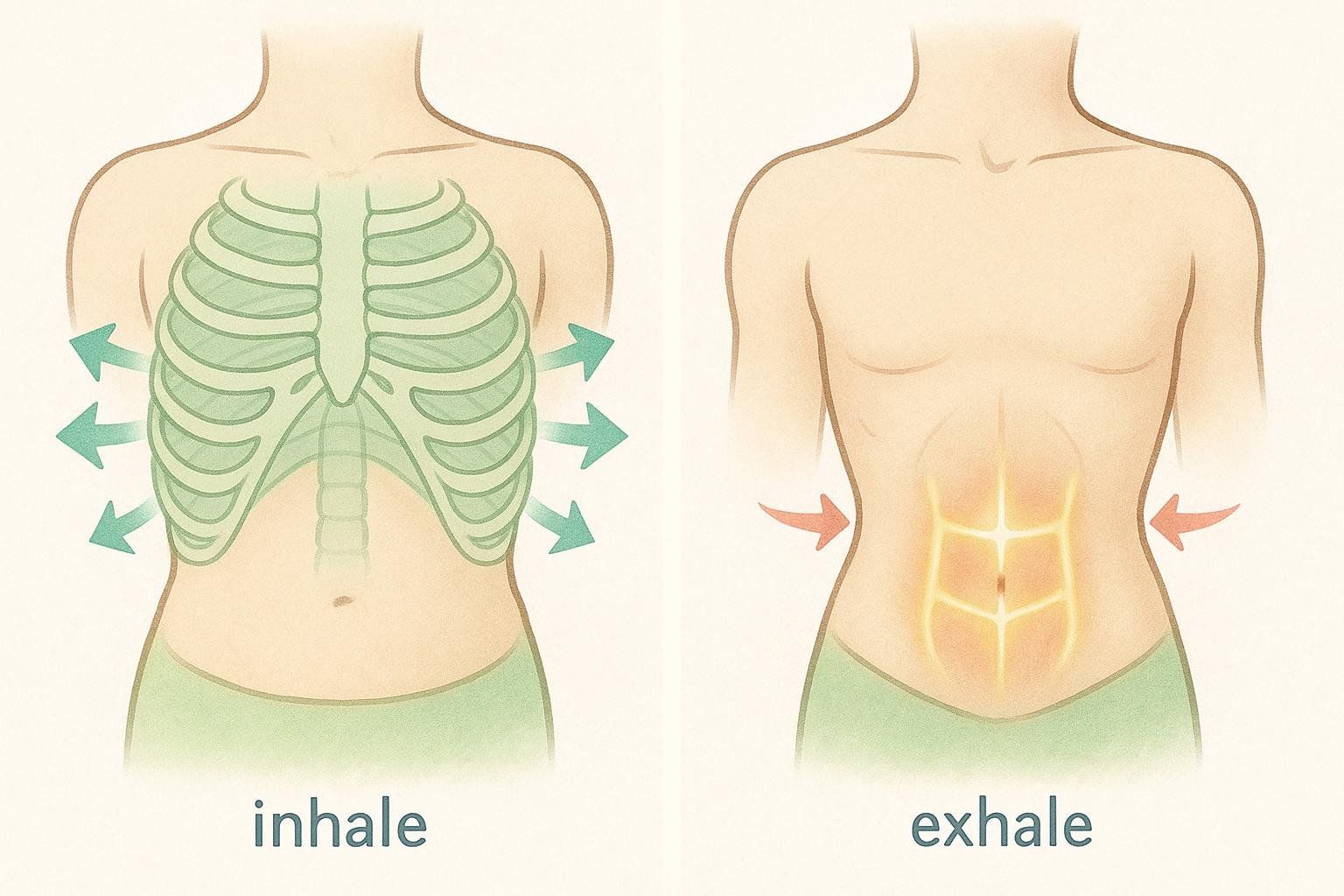
Before you jump into workouts, lock down these three golden rules:
- Breathe 360° — Inhale into your ribcage and back, not just your belly. On the exhale, imagine zipping your lower abs toward your spine and lifting your pelvic floor.
- Avoid Doming — If you see or feel a ridge popping up along your midline, scale back the move.
- Progress Gradually — Start supine, add load or gravity slowly, and focus on quality over reps.
Beginner Diastasis Recti Exercise Circuit
Perform 2–3 rounds, 3–4 times per week. Rest 30–45 seconds between moves.
| Exercise | Reps | Key Cues |
|---|---|---|
| 360° Breathing | 8–10 breaths | Inhale to expand ribs/back; Exhale to engage low abs & lift pelvic floor |
| Supine Pelvic Tilt | 10–12 | Exhale, flatten low back; inhale, release |
| Heel Slides | 8/side | Maintain a flat back; no doming |
| Dead Bug Arm Reach | 8/side | Keep knees bent; exhale on reach |
| Side-lying Clamshell | 12/side | Squeeze glutes, stabilize pelvis |
Intermediate Progressions
Advance once you’ve done the beginner circuit without doming for two weeks. Rest 45–60 seconds between moves.
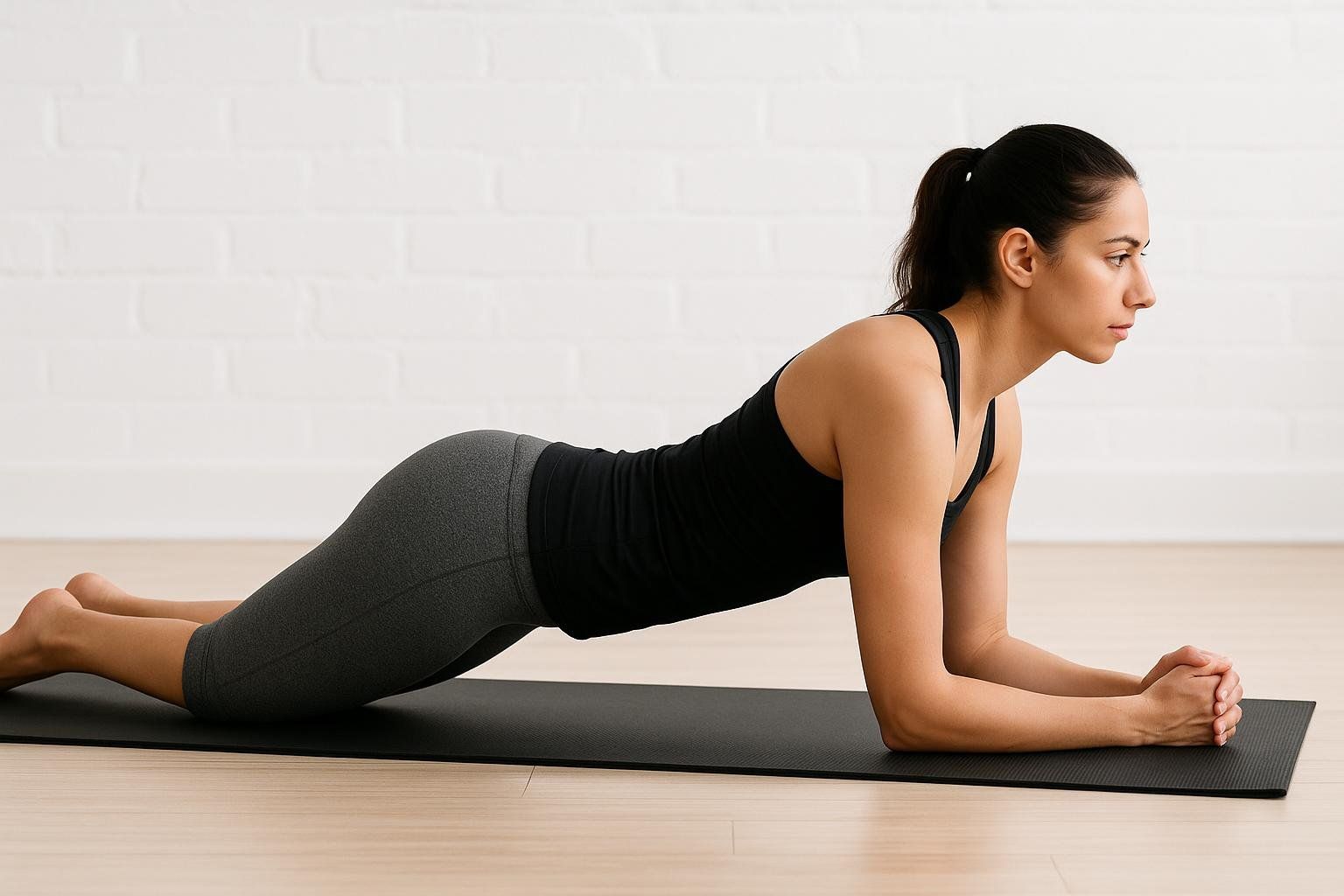
| Exercise | Sets × Reps/Duration | Key Cues |
|---|---|---|
| Elevated Quadruped Rock Back (hands on blocks) | 3 × 8 | Exhale, draw belly in as you sit hips toward heels |
| Heel Taps (supine 90/90 taps) | 3 × 10/side | Keep core engaged; prevent back arching |
| Offset Loaded Carry (suitcase carry) | 3 × 30 yds/side | Tall posture; resist side bending |
| Modified Plank (knees down) | 3 × 20 sec | Elbows under shoulders; pelvis tucked |
Advanced & Functional Drills
Rest about 60 seconds between moves for optimal form.
| Exercise | Sets × Reps/Duration | Key Cues |
|---|---|---|
| Half-Kneeling Pallof Press (anti-rotation press) | 3 × 10/side | Brace core; press straight out without torso rotation |
| Swiss-Ball Stir-the-Pot (circular plank on ball) | 3 × 8 circles each way | Keep hips level; move arms only |
| Resistance-Band Deadlift (band under feet) | 3 × 12 | Hinge at hips; exhale on stand |
| Front-Loaded Squat to Box (goblet or front rack) | 3 × 8 | Keep elbows up; control depth |
| Farmer’s Carry (double dumbbell carry) | 3 × 40 yds | Shoulders down & back; slow, steady steps |
Common Mistakes & Troubleshooting
- Holding Your Breath: Breath-holding spikes intra-abdominal pressure and can open the gap.
- Jumping Straight to Planks: Standard planks load the linea alba at a disadvantaged angle. Master modified versions first.
- Chasing Reps Over Quality: One perfect rep > 10 sloppy ones.
- Neglecting the Pelvic Floor: DR and pelvic-floor dysfunction often coexist. Include kegels or consult a pelvic-health PT.
Daily Habits That Speed Healing
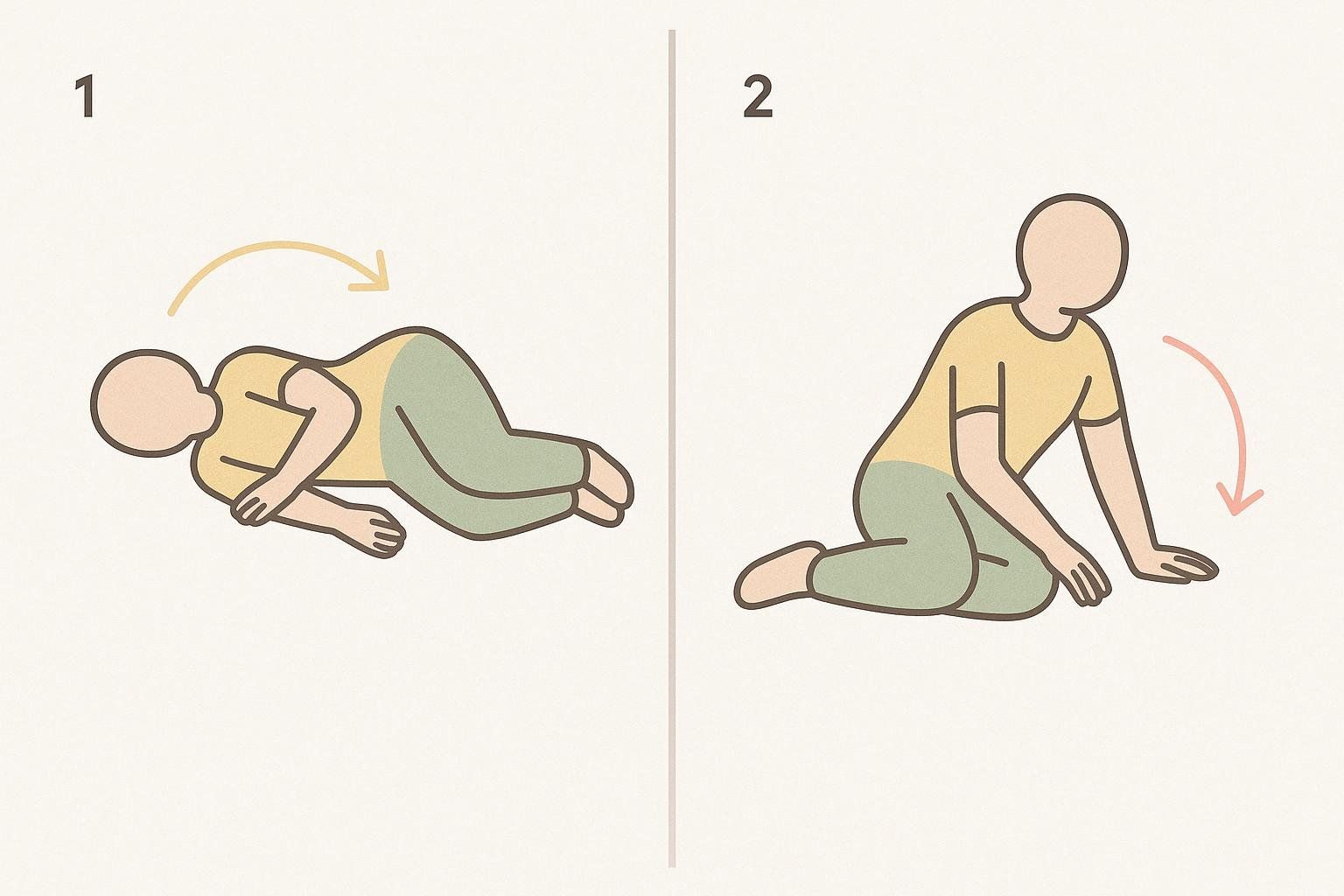
- Log-roll out of bed instead of jack-knifing up.
- Use diaphragmatic breathing while lifting babies, groceries, or weights.
- Prioritize posture—think ribs stacked over pelvis.
- Eat protein-rich meals to support collagen repair.
- Walk daily to improve circulation and core endurance. See our guide to home cardio exercises for more safe options.
When to Seek Professional Help
Book a visit with a pelvic-health physical therapist or your healthcare provider if you experience:
- A gap wider than 4–5 cm after 12 weeks of exercise
- Bulging that worsens despite correct form
- Pelvic pain, incontinence, or hernia symptoms
FAQs
Can men do diastasis recti exercises?
Absolutely. Men often develop DR from heavy lifting, chronic straining, or large weight fluctuations—all scenarios that spike intra-abdominal pressure. The same core-friendly principles apply: master 360° breathing, avoid doming during lifts, and progress load gradually. With consistent practice, men see similar gap reductions and posture improvements as postpartum women.
How long does it take to close the gap?
Healing times vary. Many people notice measurable improvements within the first couple of months of consistent training, while wider separations (≈ 3 cm or more) may require several months or longer.
Are crunches always bad?
Not necessarily. Once you can control intra-abdominal pressure and prevent bulging, graded curl-ups may help strengthen your rectus without widening the gap—see the 2023 randomized trial. However, this step should only be taken under the guidance of a qualified physical therapist to ensure proper form and safety.
Do belly bands help?
They offer external support and tactile feedback but don’t heal the tissue on their own (Cleveland Clinic).
Take the Next Step
Ready to turn numbers into motivation? A BodySpec DEXA scan pinpoints lean mass, fat mass, and visceral fat—metrics that shift as your core gets stronger. Book a scan today to track real change, not just inches.

